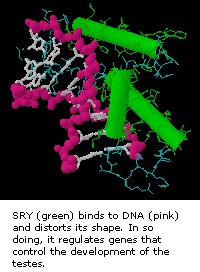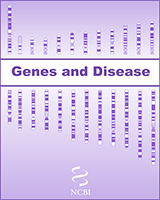NCBI Bookshelf. A service of the National Library of Medicine, National Institutes of Health.
National Center for Biotechnology Information (US). Genes and Disease [Internet]. Bethesda (MD): National Center for Biotechnology Information (US); 1998-.

We have come a long way in our understanding of sexual dimorphism since 355 BC. In those days, Aristotle suggested that the difference between the two sexes was due to the heat of semen at the time of copulation: hot semen generated males, whereas cold semen made females. Thankfully, we now know a little more about the molecular events of sex determination.
Usually, a woman has two X chromosomes (XX) and a man one X and one Y (XY). However, both male and female characteristics can sometimes be found in one individual, and it is possible to have XY women and XX men. Analysis of such individuals has revealed some of the molecules involved in sex determination, including one called SRY, which is important for testis formation.
SRY (which stands for sex-determining region Y gene) is found on the Y chromosome. In the cell, it binds to other DNA and in doing so distorts it dramatically out of shape. This alters the properties of the DNA and likely alters the expression of a number of genes, leading to testis formation. Most XX men who lack a Y chromosome do still have a copy of the SRY region on one of their X chromosomes. This copy accounts for their maleness. However, because the remainder of the Y chromosome is missing they frequently do not develop secondary sexual characteristics in the usual way.
Since human SRY is similar to SRY of mice, a model of SRY function has been developed in mice. This has been particularly important in discovering the interactions of SRY with other genes in male sex determination.
Related diseases
- Genome view see gene locations
- Entrez Gene collection of gene-related information
- BLink related sequences in different organisms
- Research articles online full text
- Books online books section
- OMIM catalog of human genes and disorders
- SRY: Sex determination - Genes and DiseaseSRY: Sex determination - Genes and Disease
Your browsing activity is empty.
Activity recording is turned off.
See more...
